© 2024 All Rights Reserved. Do not distribute or repurpose this work without written permission from the copyright holder(s).
Printed from https://www.damninteresting.com/a-trail-gone-cold/
Iceland is known to the rest of the world as the land of Vikings and volcanos, an island caught between continents at the extremities of the map. Remote and comparatively inhospitable, it was settled only as long ago as the 9th century, and has seen little additional in-migration since. Even today, more than 90 percent of Iceland’s 390,000 residents can trace their ancestry back to the earliest permanent inhabitants, a Nordic-Celtic mix. The tradition of the Norse sagas lives on in the form of careful record-keeping about ancestry—and a national passion for genealogy. In other words, it is not the place to stumble upon old family mysteries.
But growing up in the capital city of Reykjavík in the 1950s, neurologist Dr. Kári Stefánsson heard stories that left him curious. Stefánsson’s father had come from Djúpivogur, an eastern coastal town where everyone still spoke of a Black man who had moved there early in the 19th century. “Hans Jónatan”, they called him—a well-liked shopkeeper who had arrived on a ship, married a spirited woman from a local farm, and became a revered member of the community.
The local census did record a man by the name of Hans Jónatan, born in the Caribbean, who was working at the general store in Djúpivogur in the 19th century—but that was all. No images of the man had survived, and his time in Iceland was well before any other humans with African ancestry are known to have visited the island. If tiny, remote Djúpivogur did have a Black man arrive in the 19th century, the circumstances must have been unusual indeed.
It was an intriguing puzzle—and solid grounds for a scientific investigation. Given the amount of homogeneity in the baseline Icelandic population, the genetic signature of one relative newcomer with distinct ancestry might still stand out across a large sample of his descendants. Geneticists thus joined locals and history scholars, and they pieced together a story that bridged three continents.
In 1964, University of Copenhagen law professor Knud Waaben wrote an extensive review of two men born into slavery in the 18th century who ended up fighting for their rights in Danish court. History had lost track of both men, according to Waaben, and only speculation was possible as to any later stages in the life of either.
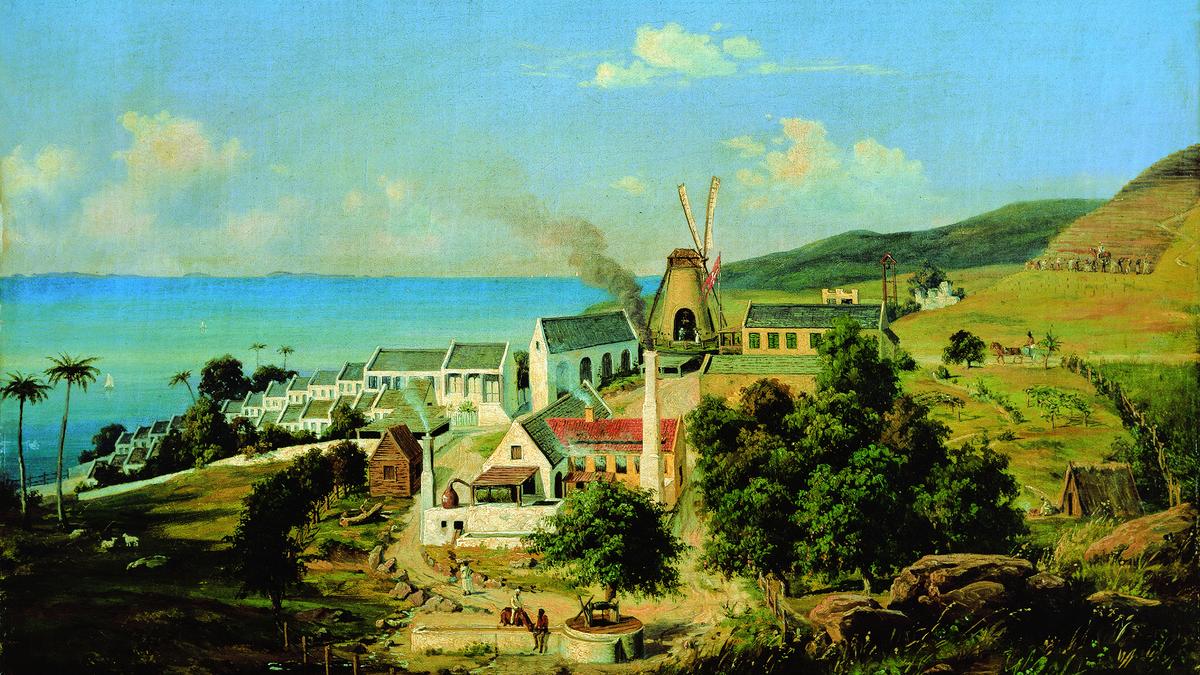
One of the two men had been born on 12 April 1784 in the town of Christiansted on the Caribbean island of St. Croix. This small piece of land—named by the French, intermittently occupied by the British, and technically owned by the Danish—exemplified the European-colonial squabbling that was playing out all over the Caribbean, not to mention the Americas and also the world in general.
The economies of St. Croix and the other Danish West Indies were driven almost exclusively by the Europeans’ relatively new but insatiable need for sugar. Production of the stuff was based on an incomprehensible amount of slave labour. Generations of field-slaves and house-slaves endured brutal conditions across hundreds of sugarcane plantations as European sugar magnates became enormously wealthy. By the late 18th century, St. Croix held around 3,000 white people—almost all men—plus about ten times as many Black slaves. Escape attempts were easily thwarted, since St. Croix afforded very few places to hide. Captured runaways were subjected to vicious beatings, public shaming, or both, even if they were children.
In Danish, he was called Hans Jonathan, as he was born into slavery and thus not entitled to a surname. His mother was a house slave named Regina, who at the time was in her mid-20s; her pregnancy was likely involuntary. Regina’s owner was a wealthy young widow named Henrietta Cathrina Schäffer, who brought with her Regina and several other slaves when she married Ludvig Heinrich Ernst von Schimmelmann, a local judge from a prominent German-Danish family who was rapidly climbing through the political ranks of the Danish West Indies. In 1784, the same year Hans Jonathan was born, Schimmelmann was appointed Governor-General of the territory.
Hans was noticeably lighter-skinned than his mother, which suggested he was the offspring of Regina and a free white man. Exactly which free white man is unknown; historical records are vague, indicating only that the father in question was “said to be the secretary”. In his extensive 2014 biography of Hans Jonathan, Icelandic anthropologist Gísli Pálsson weighs the evidence and considers several possibilities. He points out that if “the secretary” is taken literally, the most logical match is a man named Hans Gram, who was the Schimmelmanns’ scribe at the time (though Gram would later find minor fame in the United States as a composer). That said, “the secretary” is not a reliable clue, as it may have been either someone’s guess or a deliberate cover story. Other candidates for Hans’ paternity cannot be ruled out—including Schimmelmann himself.
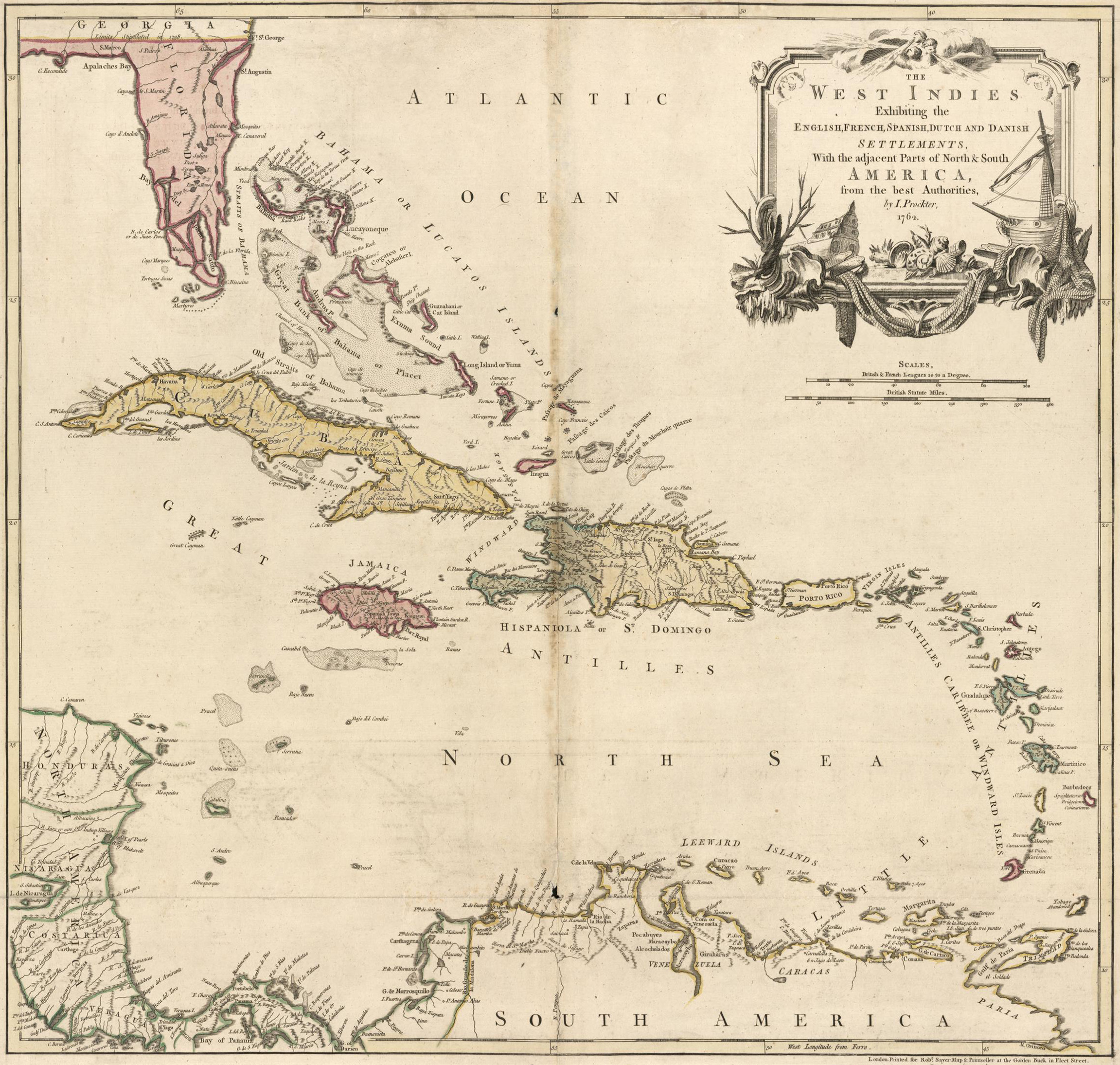
Little Hans spent his early childhood at the Schimmelmanns’ sugar plantation, Constitution Hill, picking up three languages used locally (Danish, English, and the St. Croix creole of the time). In 1788, Schimmelmann left his post in the Danish West Indies, and he and Henrietta made arrangements to return to Copenhagen and settle in an affluent neighbourhood. They selected several adult slaves to take back to the homeland—including Hans’s mother, now called Emilia Regina after a mandatory baptism in 1787, and her brother. The slave children were another matter. They were considered too young to bother with, so four-year-old Hans, along with his younger half-sister and their two cousins, were left behind in Christiansted. Surprisingly, four years later, the Schimmelmanns appear to have changed their minds; they arranged for the two eight-year-olds—Hans and one of his cousins—to travel to Copenhagen and join the household in 1792.
Europe was another world relative to St. Croix, and not just because it was colder. The languages were mostly familiar, but the capital of Denmark was large, bustling, and cosmopolitan—home to almost 100,000 people from a variety of backgrounds. Far removed from the sugar plantation, here all of the slaves were house-slaves; they were responsible for looking after the Schimmelmanns’ children, and cleaning and maintaining the family’s lavish five-storey mansion to the standards of European aristocrats.
Ludvig Schimmelmann died at the end of 1793; most of his surviving children moved out in their young adulthood before the end of the century. Now the head of household, Henrietta Schimmelmann made it very evident that she believed in the traditional definition of slavery, whereby her slaves would do her bidding and that was that. The Copenhagen census of 1801 lists that she had nine “servants” at the time, including Hans, his mother, and his cousin. Hans was given a small amount of schooling—enough to learn to read and write and do arithmetic, which suited Hans’s curiosity and intellect. Alongside this, he received exposure to European music and fell in love with playing the violin. At some point, he was able to acquire an instrument of his own, which he cherished. Once he was a teenager, he was to some extent allowed to roam the city on his own. Still, he and the few other Black house-slaves of Copenhagen did not have true freedom, nor would it have readily occurred to their owners to consider giving it to them.
More broadly, across Europe slavery was becoming a contentious political issue. Abolitionist thought was on the rise, with an increasing number of people scoffing at defenders’ insistence that slaves were happy (or, if unhappy, it was their own fault). Denmark agreed in 1792 that it would soon put a stop to new slave trading; however, this would not end any pre-existing slavery. In order to mitigate the inconvenience to angry wealthy white people, the changes would take effect only in stages over several years. In 1795, it became illegal for Danish slaveholders to transport Caribbean slaves back to Denmark (as the Schimmelmanns had done). In 1803, slave trading beyond the Danish West Indies was outlawed.
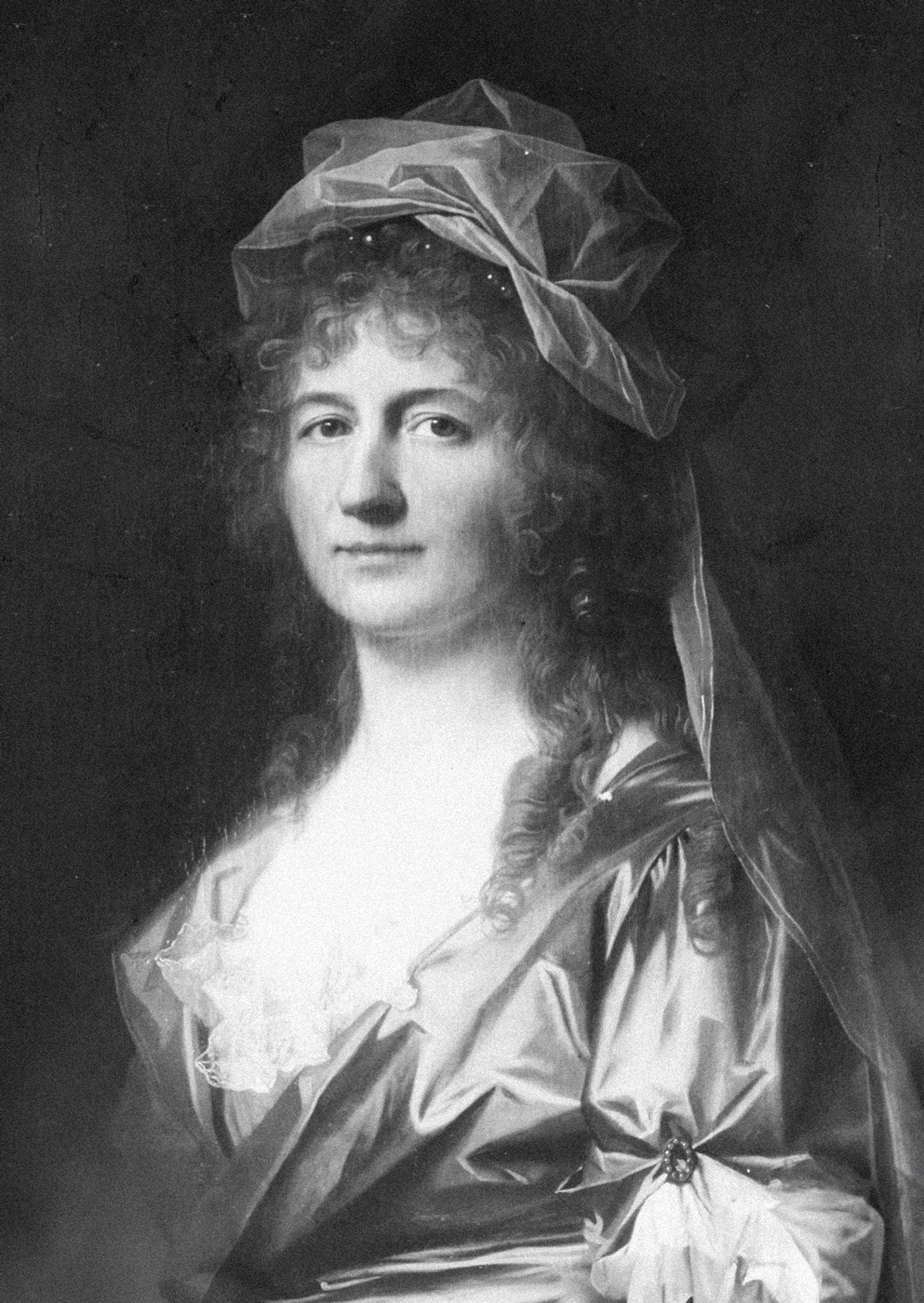
But none of this freed Hans Jonathan. As the 18th century turned into the 19th, he found himself in a rotten state indeed, and started pushing back against his lot in life. He repeatedly broke his evening curfew, spending time in the city and mingling with locals, visitors, and students studying in Copenhagen. This infuriated Henrietta. She would stay up waiting for him, then lecture him when he finally returned. Henrietta was a well-off, powerful woman with allies throughout the upper ranks of Danish society. She had no trouble putting her foot down to rein in a disobedient teenage slave.
Things reached their breaking-point at the beginning of 1801 when greater hostilities flared and Denmark found itself on the brink of war with the United Kingdom. Normally these two countries got along with each other, but that was mainly because Denmark tended to be wary and deferential. The British as a colonial and trading power were brash, dominant, heavy-handed, and hypercompetitive. They were especially interested in keeping war supplies out of the hands of their most dependable adversaries—the French. So when Denmark sought to enter into an alliance with Russia, Sweden, and Prussia to facilitate trade with France, it flung British hackles into the stratosphere. Enraged, Great Britain intercepted a group of Danish trading ships, setting the scene for direct naval conflict. Up against the most powerful navy on the planet, Denmark put out a call for patriotic men to enlist.
Henrietta Schimmelmann’s 20-year-old son enthusiastically took up the call and went to serve in the Royal Danish Navy. Right behind him was a similarly eager 16-year-old Hans Jonathan—until Henrietta caught him and said absolutely not. Hans argued that he did not have to follow her rules. Appalled, Henrietta reached for a cane and whacked the young man with it several times to show him who was boss. That did it. Later that evening, Hans said a quick goodbye to his mother, then walked off the Schimmelmann property and joined the Navy anyway.
Henrietta went to the police. Her son had spoken to them just two days prior, reporting the disappearance of money from his possession—200 Danish rigsdalers (several thousand dollars in modern USD). There is no evidence that this had anything to do with Hans Jonathan, but Henrietta decided to blame her slave for it anyway—on top of complaining about his running away. This move was a gamble that could soon have turned very dark, as theft in Denmark had frequently been treated as a capital offense. Henrietta emphasised that the punishment she sought was merely to have Hans Jonathan sent back to St. Croix and sold. That would put him in his place—literally and otherwise.
Meanwhile, the newly minted naval recruit was about to help his current country face the British. It was the beginning of April, and Britain was eager to catch Danish ships in port at Copenhagen as early as possible. Any later in the spring, and the ice would melt enough to risk letting the Russians out to assist Denmark. In Copenhagen, the Danes would have the home-field advantage, but that was all that could be said for them, as their fleet was much smaller than the British Royal Navy and not remotely as well-trained.

The Danish people tended to be quiet about their devotion to their country, but when the Battle of Copenhagen began on 2 April 1801, Denmark found itself whipped into a fiery patriotic frenzy. Hans Jonathan was assigned to the Charlotte Amalie, a ship named after a queen consort from a century earlier. The ship took the not-quite-17-year-old and his shipmates straight to the heart of the action. Barely 300 metres from two huge British ships, the Charlotte Amalie exchanged fire with the British over the course of a harrowing four hours, as the doctors below the deck of the ship desperately tried to keep up with the number of men being wounded or worse. The Danish navy did get a boost from Copenhagen’s narrow harbour, which was difficult for the large British vessels to navigate; Britain briefly wavered and considered retreating, but then regained the upper hand. With British victory inevitable, British Vice-Admiral Horatio Nelson sent a letter to Danish Crown Prince Frederick proposing a ceasefire—the acceptance of which, he added, would keep him from having to set fire to the captured Danish ships with the crews still inside. Frederick accepted, ending the Battle of Copenhagen and kick-starting negotiations between the two countries.
The Charlotte Amalie was battered and had lost about one-sixth of its men. But Hans Jonathan was uninjured, plus his captain noticed his resolve and praised him specifically in front of others. On top of that, the Navy paid the young man 15 Danish rigsdalers for his service in battle (between $200 and $300 in modern USD).
Hans Jonathan probably thought that in joining the Navy against Henrietta Schimmelmann’s wishes, he had made his point. After all, he had risked his life—and perhaps secured a future for himself as a Danish naval officer instead of a slave. It had been only days since the Battle of Copenhagen, but, assuming that Henrietta had given up, Hans went home to see his mother.
Henrietta had done no such thing. The police had paid little attention to her complaint—the imminent British threat to the city had been somewhat more pressing. Without reinforcement, Henrietta created a makeshift jail by locking Hans inside the Schimmelmanns’ property. But after a couple of days she decided that she’d had enough, and released him back to the Royal Danish Navy.
The Navy briefly assigned Hans to a ship called the Denmark, where he forthrightly shared his unusual story with Captain Steen Andersen Bille. Subsequently, reassigned to the Elephant, Hans met a man much like himself: a slave named Peter Samuel who had also just served in the Battle of Copenhagen. Unlike Hans, Peter was in the Navy at the insistence of his owner. Still, the men had a shared goal in securing their freedom. Fortunately, they had an influential ally in Hans’s previous captain. Bille was a thoughtful man who had spent time in the Danish West Indies and was sympathetic to the two men’s cause. Better yet, he was so well-respected in the Danish government that he could simply take the issue directly to Crown Prince Frederick—which he did.
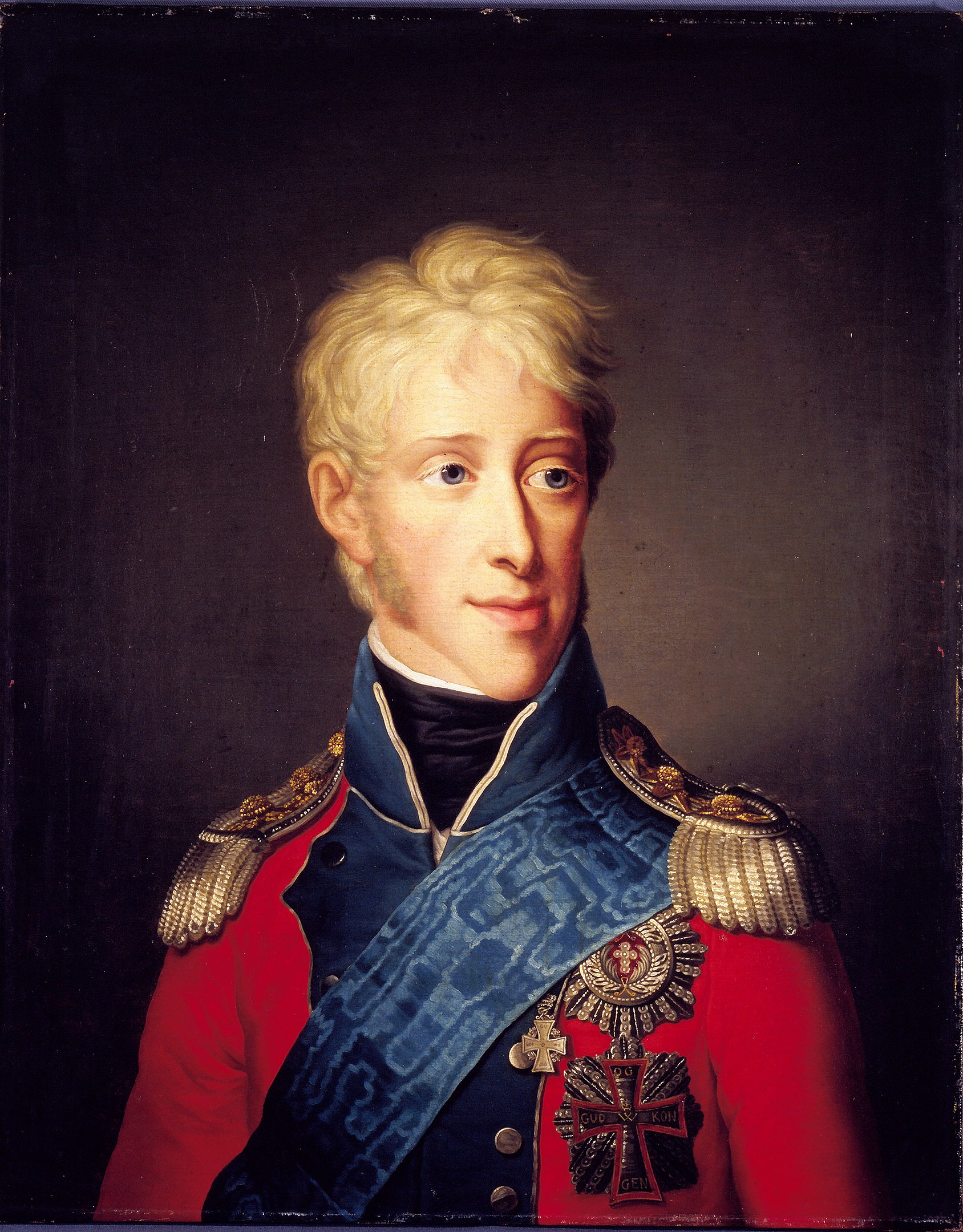
As biographer Pálsson points out, this was a dilemma for Frederick, who knew both Steen Bille and Henrietta Schimmelmann well, and was now caught between them in a dispute. Taking either position on the issue of the promising young naval recruit who was also a runaway slave could have amounted to a betrayal.
Frederick considered. Possibly in the spirit of Europe’s encroaching doubt about slavery, he ended up writing a very cautiously worded, three-page letter to Bille on 12 May 1801, gently arguing that on homeland Danish soil, the only people who could be convincingly argued to be legally slaves were prisoners whose sentences specified servitude. As long as Henrietta Schimmelmann was located within Denmark proper, he continued, no one in her household could qualify as anything lower than a free servant. While the letter did not name Hans Jonathan specifically as the person who “is considered free and enjoys rights”, it did refer to Henrietta Schimmelmann, so the intended referent was unambiguous.
It was more than enough for Captain Steen Bille. On 14 May, Bille officially bestowed freedom on Hans Jonathan. From a different commanding officer, but as the result of the same letter from Crown Prince Frederick, his shipmate Peter Samuel received the same. Finally free at 17, Hans Jonathan rented a room above a tavern, filled it with his possessions including the beloved violin, and began to consider how to pursue the life of his own that he had sought for so long.
The development left Henrietta Schimmelmann newly irate. Only a handful of people had seen Frederick’s letter to Bille, and it is not clear if Henrietta was among them; either way, the consequences would have allowed her to infer a major risk to her ability to maintain her household the way she wanted it. The letter was, from this perspective, a dangerous precedent. On its basis, any of the other eight slaves in her household (including Hans Jonathan’s mother, uncle, and cousin) could simply walk away with the presumed blessing of Denmark’s very ruler. Unacceptable! On 19 May—only a week after the release of Frederick’s letter—Henrietta marched straight back into the same police station as before and submitted a formal written complaint, asking the authorities to arrest and question Hans Jonathan.
This time, the police officers went out looking for Hans. Finding him at the tavern, they explained the issue. Hans told them he wanted to serve the Danish monarch by remaining in the navy—and he told the police that he would provide evidence of having been set free.
The complaint was left to be resolved by the courts, but when the case came up in front of the judges, Henrietta Schimmelmann was not in attendance. She had vowed to send relevant documents via her intermediary—her steward Peder Hansen—but when Hansen arrived, he claimed to have no documents to show. The court threw out the case, and Hans Jonathan was free once again. But Henrietta had not given up. She went to the navy and requested 400 rigsdalers as compensation for losing her slave (somewhere between $5,000 and $7,000 in modern USD). The Navy brushed her off.
A badly timed coincidence gave her a new idea. On 20 July 1801, a slave named David Tams slipped away from his rural Danish household and made a wild dash for Copenhagen. He too was from St. Croix and had been brought back to the homeland by slaveowners. However, his attempt at entering the city got him arrested. Tams’s irritated owner then opened a civil lawsuit hoping to establish a legal claim on the man—and Henrietta Schimmelmann, bringing a whole new meaning to the term “follow suit,” decided to do the same. Legally, this was much less complicated than her earlier accusations of theft and desertion; if she won the civil case, it would simply establish that she owned Hans Jonathan, end of story.
It was not obvious how this new court case would go. On the one hand, bringing slaves from the Danish West Indies to Denmark itself had been technically illegal since 1795. On the other, Hans Jonathan had arrived in Denmark before that point, and his move to Copenhagen had not automatically voided his status as a slave. If Henrietta owned him, she should still have the right to sell him. With that, on the evening of 3 December 1801, four police officers set off for the tavern to arrest Hans Jonathan—who once again explained the existence of the letter from Crown Prince Frederick to Captain Steen Bille ensuring his freedom. The police officers were unmoved. A slave with a personal letter from the Crown Prince of Denmark? Suuuure. Within an hour, Hans was in a cell.
At the time, Danish courtroom processes were conducted slowly and mainly through written statements. However, then, as now, access to skilled legal assistance was not equitable. Henrietta Schimmelmann, wealthy and connected, had a steadfast lawyer named N. C. Bierring, and he did so much of the work that there is no evidence she ever made an appearance in court herself. At the other end of the scale, Hans Jonathan was unable to afford the services of any lawyer, and was assigned an attorney by the court, a man thought to be named ‘Beyer’ (though sources do not agree).
Bierring slammed Hans Jonathan for his (supposed) shameless lying—to think that a slave could have had the backing of the Danish crown prince! Captain Bille still had the copy of the letter from Crown Prince Frederick, and either way could have established the truth if called as a witness. However, for some reason, Beyer did not call Bille, which suggests some incompetence as it left the accusation of lying unchallenged. Beyer also made a few errors in recounting the facts of the case, and at one point lapsed into sarcasm. Bierring leapt at the chance to criticise Beyer’s tone, undercutting the inconvenient fact that some of Beyer’s arguments had merit and strength. For instance, Beyer had been through the Danish legal code and found absolutely no support for slavery in homeland Denmark. Also, had Henrietta Schimmelmann not said in her written statement to police that Hans Jonathan had “left her service”—and thus never been anything less than a servant?
Every single one of the witnesses was from Henrietta Schimmelmann’s household, and meant to support the plaintiff. However, they were less than cooperative. Emilia Regina was understandably unhelpful when it came to answering questions in a case against her own son (especially with her own freedom possibly being at stake as well). Likewise, Henrietta’s steward Peder Hansen stood up for Hans Jonathan and pointed out that Henrietta had physically beaten him “a few times with a Spanish stick” and that Hans had left in order to serve his country. Beyer also asked: who was the young man’s father, anyway? A “free white man” or a slave? Presumably the idea was to explore the possibility that Henrietta Schimmelmann’s claim on Hans Jonathan was far from watertight—but the judges accepted Bierring’s objection of “irrelevant” and refused to let Emilia Regina respond.
Toward the end of May 1802, the analogous case of David Tams wrapped up—Danish judges sided with the man’s owner. For Hans Jonathan only days later, the judges likewise announced on 31 May their decision that Hans Jonathan was Henrietta Schimmelmann’s property and she was legally permitted to send him back to the Danish West Indies to be sold. Four of the judges saw no room for argument. The fifth, a young man not much older than Hans himself, ended up siding with his seniors but also made room in his comments for a dissenting argument that Caribbean slaves arriving on Danish soil could only be servants rather than slaves—precisely the conclusion that Crown Prince Frederick had drawn in his not-at-all-fictional letter.
The courts had not found Hans guilty of any crime, but unless he chose to appeal the verdict, he was required to turn himself in to Henrietta Schimmelmann within 15 days. The court does not seem to have noticed that, as a strategy for containing a runaway, this plan left something to be desired.
In the days following the verdict, a summary of the case and its outcome were published and disseminated as usual to the people of Copenhagen—thus making very public the dispute between the socialite and the escaped slave. One Danish government official even wrote to the Danish West Indies to warn them that an ill-behaved man named Hans Jonathan might soon be sold on the island. For the social elite, the details of the civil lawsuit made for irresistible gossip, to the point that it may have become a problem for Henrietta Schimmelmann in spite of her nominal victory.
Hans Jonathan did not request an appeal. He also did not surrender himself to Henrietta Schimmelmann. He was nowhere to be found. Once the 15-day period had elapsed, Henrietta gained the legal right to have him located and arrested. However, she does not seem to have requested police assistance. Instead, within only a year, she moved her household out of the city altogether.
However one-sided, the case was enough of a landmark that the story of the young biracial Black man up against a crushing system remains fairly well-known in Danish legal circles. But the man himself had apparently walked out of the courtroom and into the streets of Copenhagen and vanished. Even more than 150 years later, a comprehensive 1964 article by Danish law professor Knud Waaben would point out that historians had no idea what had become of David Tams and Hans Jonathan.
Around 2003, a handful of Icelanders found the 1964 Knud Waaben article. One of them reached out to Waaben, suggesting the possibility that Hans Jónatan—the Caribbean-born ancestor who had arrived in Djúpivogur with the Danish trading ships—was the same Hans Jonathan who had faced the punitive Danish legal system only very slightly earlier. All of the pieces fit, and Hans Jónatan’s backstory filled in the missing history.
Shortly after the 1802 verdict was read, Hans Jonathan briefly and surreptitiously stopped by Henrietta Schimmelmann’s house to gather his possessions, including the treasured violin, and say goodbye to his mother.
At the time, the Danish empire included both Norway and Iceland. While Norway was a powerhouse on the level of Denmark itself, Iceland was heavily agrarian and deep in the clutches of its colonial overlords. In 1800, the island’s 50,000 people were split between so many individual farms and tiny rural towns that even the largest settlement, Reykjavík, had a population of no more than 300. While Iceland had its own history, its own language, and its own literary tradition, Denmark had it in a stranglehold. The Danish essentially maintained a monopoly on trade with Iceland, forbidding the locals from trading with anyone else, and often treated the island like a pesky dependent child.
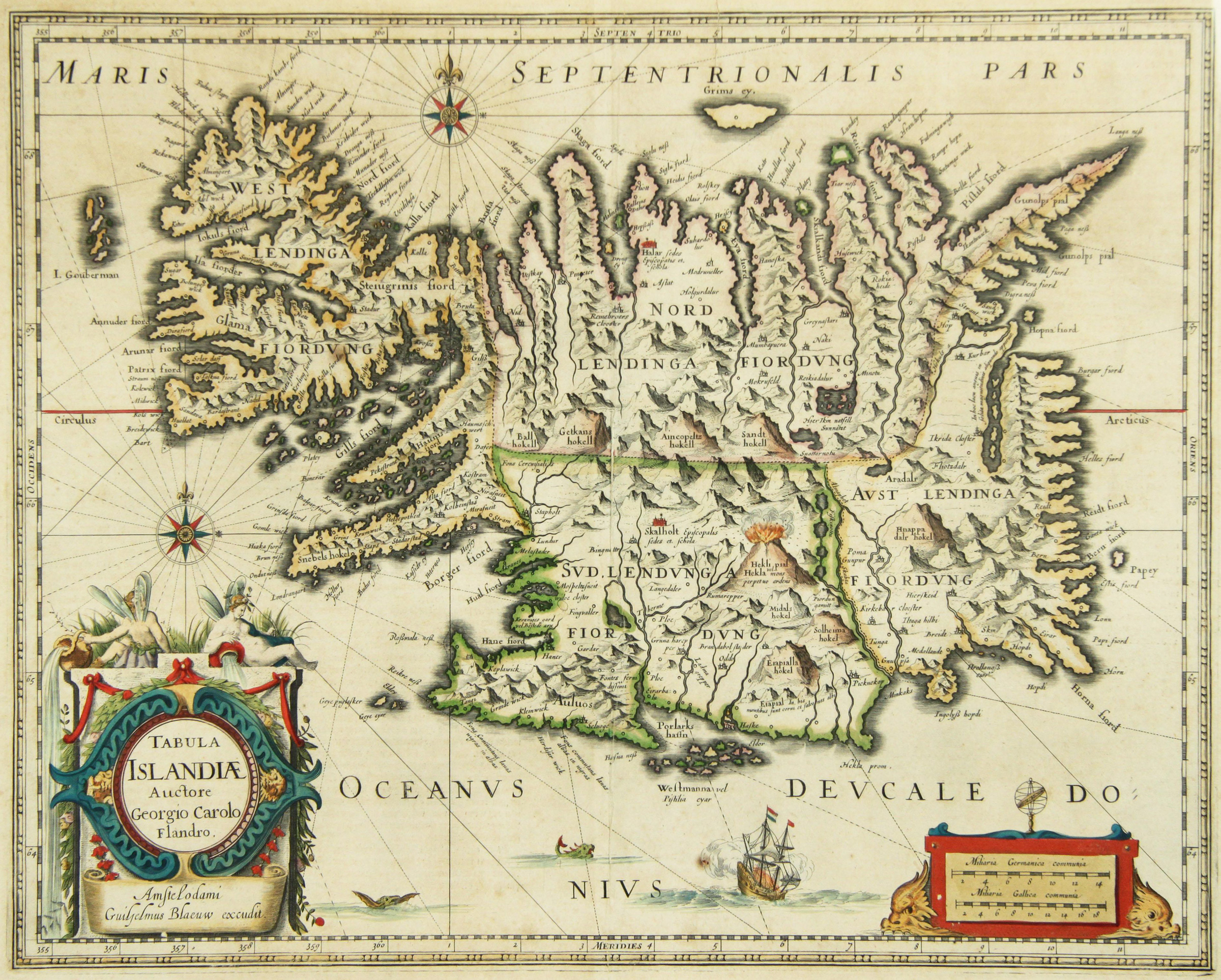
It was around the end of June 1802—just after the northern ice had melted for the summer—that one of the usual Danish trade-ships docked at the town of Djúpivogur along the eastern fjords of Iceland and Hans Jonathan stepped off. The journey had taken about two weeks. It is not known whether Hans chose this location specifically, or simply decided to leave Copenhagen for any reasonably far-flung destination as soon as he could. It is also unclear whether he intended to stay in Djúpivogur or to keep moving around as needed. Perhaps, in the manner of a talented musician, he played it by ear.
At least he could ask around for opportunities at his destination right away. Djúpivogur, population approximately 100, had sprung up as a trading post, and as a result a number of the locals spoke Danish as well as Icelandic.
None of them would have been at all familiar with the sight of a Black man, even a light-skinned biracial Black man. Fortunately, the locals welcomed him without xenophobia. They likely thought of him as the sort of Danish man they were familiar with: a merchant. Which, in fact, is what he soon became. Almost immediately following his arrival in Djúpivogur, Hans met the manager of the town’s general store, Jón Stefánsson, and was hired as an assistant.
Stefánsson was known for his kindness towards Djúpivogur’s townspeople and its very few visitors. He was a businessman but also a songwriter of local renown, not to mention an enthusiastic collector and lender of books. To Hans, Stefánsson soon proved to be a key mentor and a close friend. Stefánsson was Icelandic, but he spoke Danish as well; his wife was also from Denmark.
Icelandic census records accurately list Hans Jonathan’s name, profession, and birthplace—suggesting that he was honest about his origins and background, perhaps due to having quickly established trust with the people of Djúpivogur. However, he must have weighed the risks while deciding what to tell his new neighbours. With so many Danes around, word could conceivably have reached the relentless Henrietta Schimmelmann. On the other hand, especially once he became a trained businessman, Hans may also have been aware that the costs of retrieving an errant slave from so far away would not have been profitable. Besides, by 1807, Denmark was busy contending with a resurgent United Kingdom, leading to a Second Battle of Copenhagen and its humiliating aftermath (including British occupation of the Danish West Indies). A missing slave was not high on anyone’s priority list.
By 1809, on a sparsely populated island where the Atlantic slave-trade was not likely to be on many people’s radar, Jón Stefánsson translated fiery abolitionist essays from Danish into Icelandic. It is probable that this project sprang from discussions that Stefansson was having with his assistant.
Hans had found a niche for himself in every respect. As a young assistant storekeeper, he gained a reputation as a stellar record-keeper, committed to both accuracy and integrity. Some of his records from the Djúpivogur store survive, in tidy Danish-style handwriting. The local oral history preserved tales of Hans Jonathan’s insistence on rectifying accounting errors regardless of who was in the wrong. He gave generously of his time, sharing practical skills related to everything from mathematics to construction to wayfinding. Another of his routine duties was helping visitors to Djúpivogur navigate the harsh local terrain. A Norwegian surveyor, a Scottish preacher, and a Danish friend of the Stefánssons’ all ended up mentioning Hans Jonathan by name in their memoirs.
He was never a wealthy man in Iceland—never a landowner, in a place where virtually everyone else was. But he had his freedom and enough to live on, and he consistently spoke up for the rights and wellbeing of those less fortunate. It is uncertain whether he learned in 1816 that Henrietta Schimmelmann had died. Back in Denmark, he may have been close enough to her children to infer that they did not share their mother’s keen interest in owning slaves. At any rate, from that point onwards, no one would be chasing Hans Jonathan with a metaphorical net.
A few years later, the storekeeper Jón Stefánsson contracted a serious illness, and died in 1819. A Danish mercantile company bought the store and put 35-year-old Hans Jonathan in charge. Around the same time, romantic sparks developed: he and a 21-year-old woman named Katrín Antoníusdóttir caught each other’s attention. She came from a farming family based near Djúpivogur, and was a hard-working, skilled, well-liked member of the community. On 28 February 1820, they were married in a local church; the catering was provided by Jón Stefánsson’s widow Ellen Katrín.

To this day, the general practice in Iceland is for children’s second names to be based on the first name of one of the parents; nearly everyone is ‘son of X’, ‘daughter of Y’, or ‘child of Z’. In other words, it did not matter that Hans Jonathan had never had a mainland-European-style family surname in the first place. However, he and his wife decided to treat Hans’s second name like a surname anyway, and to pass it along to their children. Ludvik Stefan Jonathan was born on 26 May 1821, and Hansina Regina Jonathan followed on 4 August 1824.
In between the arrivals of the children, however, the store at Djúpivogur ran into financial trouble. Hans could not stand the sight of poverty and ended up putting the store in debt in order to assist the locals who were struggling the most. In 1823, he left his job and moved his family to a rental farm. This was a small and undistinguished property, but the couple’s combined skills—Katrín having grown up on a farm twice the size—allowed them to carve out a life there. Records of the family’s possessions attest to music-making, ice-skating, and book-reading alongside everyday farmwork.
But Hans’s former employer remained suspicious of him. In 1827, the new store managers concluded that some grain was missing from storage, and asked whether he knew anything about this. The issue never received a resolution. While out in the fields, 43-year-old Hans Jonathan died suddenly of what was probably a cerebral hemorrhage. Given that his family was only renting the farm at Borgargarður, Katrín had him buried at her own family’s farm in nearby Hals. However, as headstones were very expensive, the exact location of his grave is not known.
Many of Hans’s assets were liquidated to settle the outstanding debts—though his beloved violin went to his son Ludvik. Katrín likely continued running the farm at Borgargarður and raising the children on her own, at least until she remarried in about 1834 and the family moved to the town of Bulandnes several years later. Ludvik and Hansina both married and started families of their own, but then both died in their 30s. Fortunately, Katrín lived until 1869, which was long enough to finish raising her six surviving grandchildren and see them all become locally well-respected young adults.
Slavery was finally abolished in the Danish West Indies in 1848, though the system of bound servitude that replaced it was not much better. Only the decline of the sugarcane industry finally brought it all crashing down. In 1917, with the plantation era behind and the colony becoming a financial burden, Denmark sold the Danish West Indies to the United States, which paid $25 million and renamed the territory the U.S. Virgin Islands. Its capital on the island of St. Thomas is still named Charlotte Amalie. As for Iceland, it finally gained full independence from Denmark in 1944, and Reykjavík has become a city of more than 100,000 people.
Over a century later, in the 1990s, Dr. Kári Stefánsson did not set out to investigate Hans Jónatan’s genetic history. Instead, he became a neurologist, and moved to the United States to complete his training at the University of Chicago, then on to Harvard University to teach. But Stefánsson found himself repeatedly thinking of the untapped scientific potential of mapping and studying the gene pool in his home country.
Stefánsson realised that Iceland’s genetic homogeneity could make it a spectacular natural laboratory. While the combination of a small founding population and a low number of newcomers would not eliminate random mutations in the genome over time, it would certainly control for genetic variance between humans to an unusual degree. One of Stefánsson’s earliest ideas along these lines, for instance, proposed comparing the genetic material of Icelanders with and without multiple sclerosis (MS). Given extremely similar ancestry, the DNA of these two groups would be overwhelmingly comparable. If such a study identified a tiny number of systematic differences between the individuals with MS and those without, those differences would be candidates for the genetic origins of MS in humans more generally. The study would be all the better for taking place in a country with universal health care and—characteristically—extensive medical record-keeping.
By 1996, the chance to launch an enormous Icelandic genome project was too tempting to pass up. Stefánsson resigned his position as Chief of Neuropathology at Harvard and moved back to Iceland to establish deCODE Genetics. While deCODE was always a private biopharmaceutical company, and there are privacy concerns in the collection of health-related information, many Icelanders have been willing to provide consent. The number represented in the data held by deCODE is now well above two-thirds of the adult population of the country—and the findings have been unlike anything else in the world. Aside from identifying markers of susceptibility to particular genetic diseases, the findings have yielded high-resolution models of the human genome, inspired new drug development, and illuminated several aspects of how genes recombine in human offspring.
In the last decade, with new scholarly attention from multiple angles, the full story of Hans Jonathan finally came together. University of Iceland history professor Gísli Pálsson published a full biography of Hans in Icelandic in 2014, with an English translation by Anna Yates (The Man Who Stole Himself) following in 2016.
Meanwhile, deCODE undertook another milestone. Remembering the stories of his youth about the Black ancestor in his father’s hometown of Djúpivogur, Stefánsson started a project with several colleagues to reassemble the man’s genome from the genetic information in his descendants alone. What made the task straightforward was that the signal of any recent African ancestry would be clear against the backdrop of the limited Nordic/Celtic gene pool that had characterised Iceland for 1,200 years. In their 2018 paper, the researchers verified that the only noticeable source of recent African DNA in the Icelandic gene-pool in the fifty years between 1880 and 1930 had come from only one individual with XY sex chromosomes: Hans Jónatan. His Y chromosome, inherited from his father, was typical of mainland Europe; his X chromosome, from his mother, was clearly African in origin.
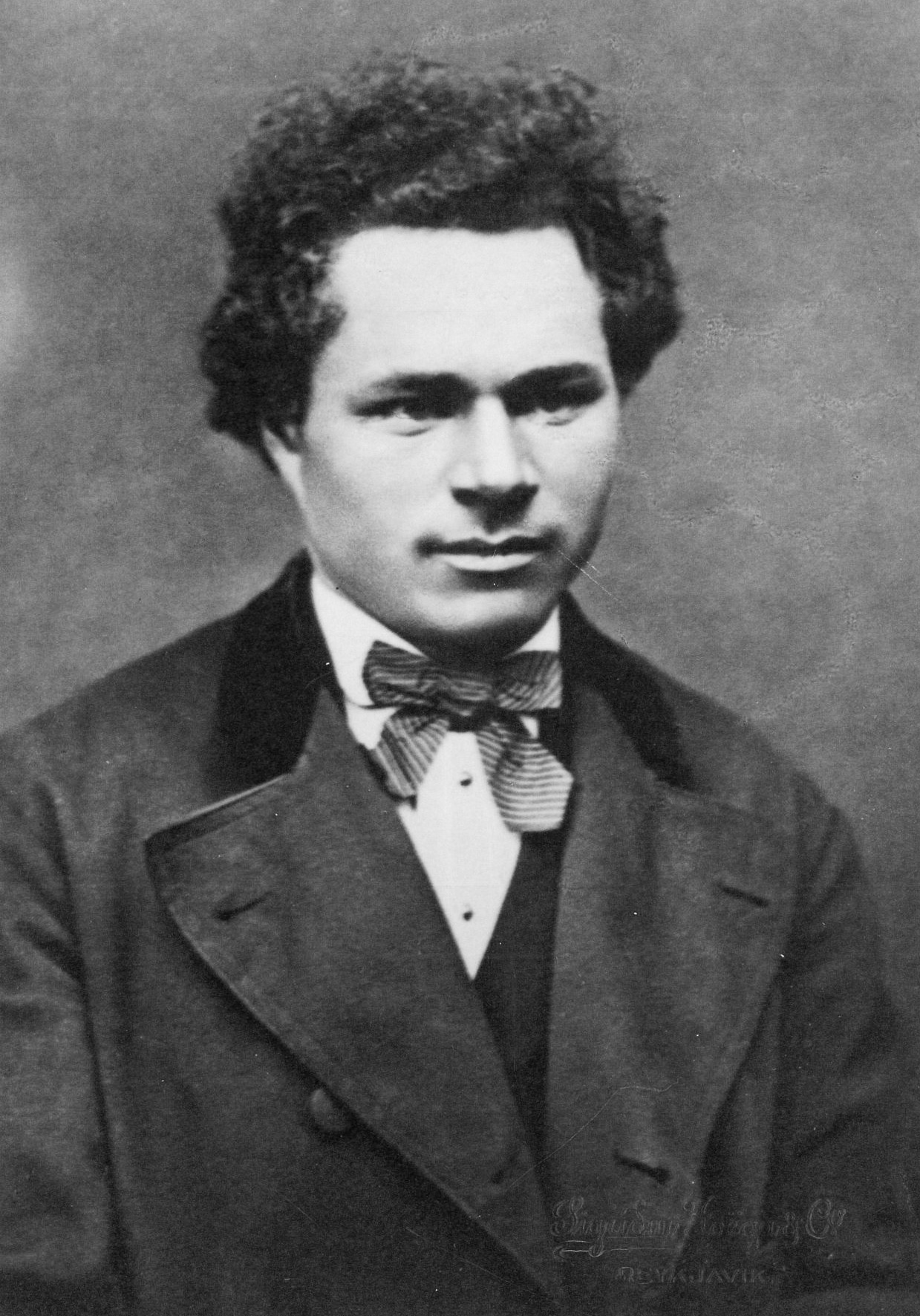
A number of Hans Jonathan and Katrín Antoníusdóttir’s descendants have been noted musicians, and great-granddaughter Hansína Regína Björnsdóttir was a well-known early photographer in the late 19th century. By the 2010s, the genetic researchers who collaborated on the 2018 paper—17 geneticists including Kári Stefánsson himself—found 788 verified living descendants. They partially sequenced the genomes of 182 of these descendants, then for 20 of those, the researchers sequenced their genomes in their entirety. While no single descendant could have inherited all or even most of Hans Jonathan’s DNA, different descendants got different pieces and combinations, and with the influence of the baseline Icelandic gene-pool (i.e. Katrín) filtered out, Hans’s genes from elsewhere have been revealed. While the identity of Hans Jonathan’s “free white man” father has not yet been determined, the researchers have found considerable insight in an analysis of Hans’s maternal DNA.
We know very little about Emilia Regina’s background from the historical record alone. Emilia Regina appears to have been born around 1760, possibly the daughter of one of three house-slaves at a sugar plantation called “La Reine”, but it is not even clear whether she was born on St. Croix or transported there from Africa at a young age. After Henrietta Schimmelmann’s 1802 civil lawsuit, Emilia Regina disappears from the record entirely.
In 2017, Denmark issued a formal apology for the role it played in the European slave-trade. Modern genetics cannot possibly compensate for the harm done, but it can offer some answers after-the-fact and help descendants and their supporters put some of the pieces back together.
The researchers on the 2018 paper zeroed in on Hans Jonathan’s maternal haploid genome—his DNA from Emilia Regina—and reported having been able to reassemble about 38 percent of it. This is a stunning amount of information gathered from modern descendants alone about the mother of a man who died in 1827. Comparing the DNA to reference populations from different parts of the African continent, the geneticists found that Emilia Regina was clearly linked with present-day populations of Nigeria, Cameroon, and Benin—particularly those of Yoruba descent. In reverse-engineering the DNA of a group of present-day descendants to make new discoveries about ancestors from centuries ago, this case study is the first of its kind.
To be sure, the unusual circumstances of Hans Jonathan’s background, in conjunction with his excellent choice of hiding place and the large number of descendants he has, all ensured that this was a relatively clear-cut demonstration of how the DNA of a single ancestor could be disentangled from everything else going on in a population’s collective genes. Still, it is a leap forward for human understanding. Centuries ago, slaves in the Americas abducted from Africa frequently hoped that they would be able to someday return. On the individual level, extremely few were able to do so; however, genetic genealogy opens up the possibility of making reconnections to bridge the gaping hole.
As the editors of Nature Genetics commented in a short editorial accompanying the release of the 2018 article on the background of Hans Jonathan, the project crucially involves “our interwoven genomic and social histories.” In other words, DNA is something of a time-capsule of all of our biological ancestors. To the extent that we are our genes, we are also the histories of those who came before us – just as our own histories will be interwoven with those to come.
© 2024 All Rights Reserved. Do not distribute or repurpose this work without written permission from the copyright holder(s).
Printed from https://www.damninteresting.com/a-trail-gone-cold/
Since you enjoyed our work enough to print it out, and read it clear to the end, would you consider donating a few dollars at https://www.damninteresting.com/donate ?

THANK YOU!!! WELCOME BACK!!!
SECOND!
I’m so excited for new content! With a new podcast episode too, it’s almost like it’s Christmas morning! :)
A fascinating, interesting and well-researched piece.
A cracker as ever.
Thank you for these great articles. It’s always a pleasure to see a new one pop up.
Thank you. Very interesting. One humble suggestion: This gentleman could perhaps be better refered to as “African” or “black” rather than “Black” as he did not identify with cultures or civil-rights movements of the 21st century. It is perhaps unfair to try to push historic figures into our modern perspectives. Regards 🕊
@HugoZyl: Appreciate the feedback. I’ve thought about it a bit and decided that I agree with the general idea; I just don’t think it applies in this case.
Like, the Public Universal Friend existed and didn’t identify as either male or female, but we can’t really call them ‘nonbinary’ when that label and the amount of public awareness behind it are from a very different cultural milieu. All conceptions of gender identity are products of time and place and culture.
And all conceptions of racial groups are that way too, right? Yes – but in this case, the group of people being referred to is (very nearly) the same as before, with (very nearly) the same label and (very nearly) the same power differential. Capitalising the B in Black does look noticeable, but the only reason why it doesn’t come across as a generic/’neutral’ term at the moment is that it’s new. Or, rather, that the consensus to use it is new. Calls (from the in-group) for the American press to capitalise the B go back at least as far as the 1920s, but only in 2020 did a bunch of American press style-guides adopt the convention. So the decision to change the standards of usage is certainly linked to Black Lives Matter, but that doesn’t mean it refers only to very recent people or to activists. 10-15 years from now, if all continues along the same trajectory, even references to Black ancestors (i.e. people of the past) will look weird without the capitalised B in American English. What seems ‘neutral’ or not changes over time, sometimes quickly and dramatically.
It’s all relative, pretty much. As far as I’m aware, we don’t know how Hans Jonathan himself described himself, racially speaking. Even if we did know, odds are that none of the words/phrases would have been from American English. And then, even if we solved the translation issue, we’d still have the offset in time. If we treated it like a period-recording of Baroque music and aimed to use the ‘neutral’ descriptors of the time period, at least in American history…well, some of those words are slurs in the American present and we can’t magically get the readers to ignore that. Plus it would be disingenuous to expect anyone to just do so. Geneva Smitherman has written a bit about this in American Speech with some examples. DI readers have a way of being from the present, and most of us have a ton of social intuitions about language, but only from our own lifetimes.
(It’s the same reason why onlookers tend not to see how vernacular the language in Shakespeare was at the time of original performance. The illusion comes from how archaic-sounding a lot of those words are now. Most of us don’t have Elizabethan-era intuitions about English-language usage.)
TL;DR this was accidentally relevant to my day-job in sociolinguistics.
It’s great to see the website back up! Since 2015!! It’s been amazing
Hello! Thank you for an accurate and excellently researched article about this relatively unknown and phenomenal story.
I am married to one of Hans Jónatan’s descendants and my mother-in-law is currently the oldest living descendant.
If you would like to interview descendants, I can put you in touch with lots of them, including the one who still owns and plays Hans Jónatan’s violin!
There also is now a monument to Hans Jónatan in Djúpivogur that was erected in 2018 and dedicated by then Prime Minister, Katrín Jakobsdóttir.
Thank you again for furthering the telling of Hans Jónatan’s story.
Please come back to us!
Miss the DI pod casts and I’ve listened to everything like 5 times over.
What happened to the long-form? I have donated before and it’s been a long time between drinks.
Regarding the recent lack of long-form articles/episodes, we are still working on new stuff. We currently have several in parallel development. The whims of the universe have merely slowed us down. Some of them are hopeful whims (e.g., dedicating time to a possible film adaptation), some of them harmful whims (e.g., the complications of the current global chaos).
Damn Interesting has always been a side project–a labor of love–so our schedule suffers occasional hills and valleys, mostly valleys. Just FYI, if you don’t want to keep checking in, there are several options in the site footer to be alerted when we publish.
Thanks for asking after us! It lets us know that you give a damn.